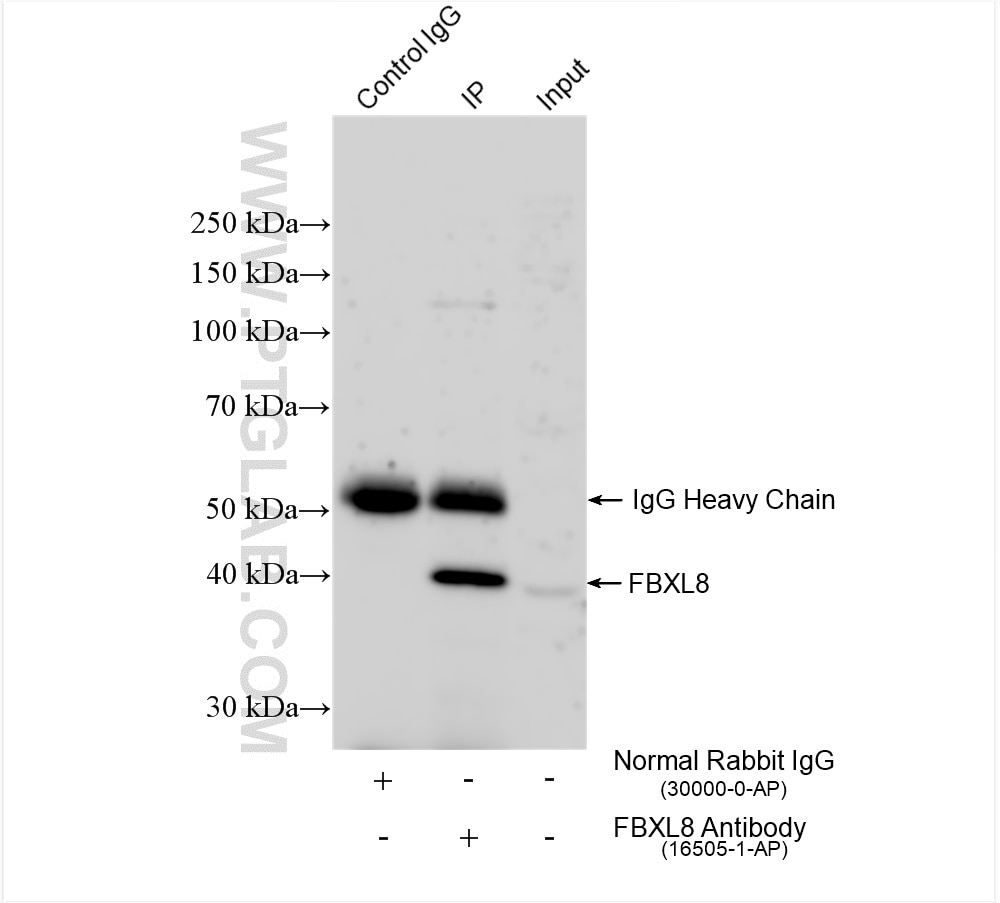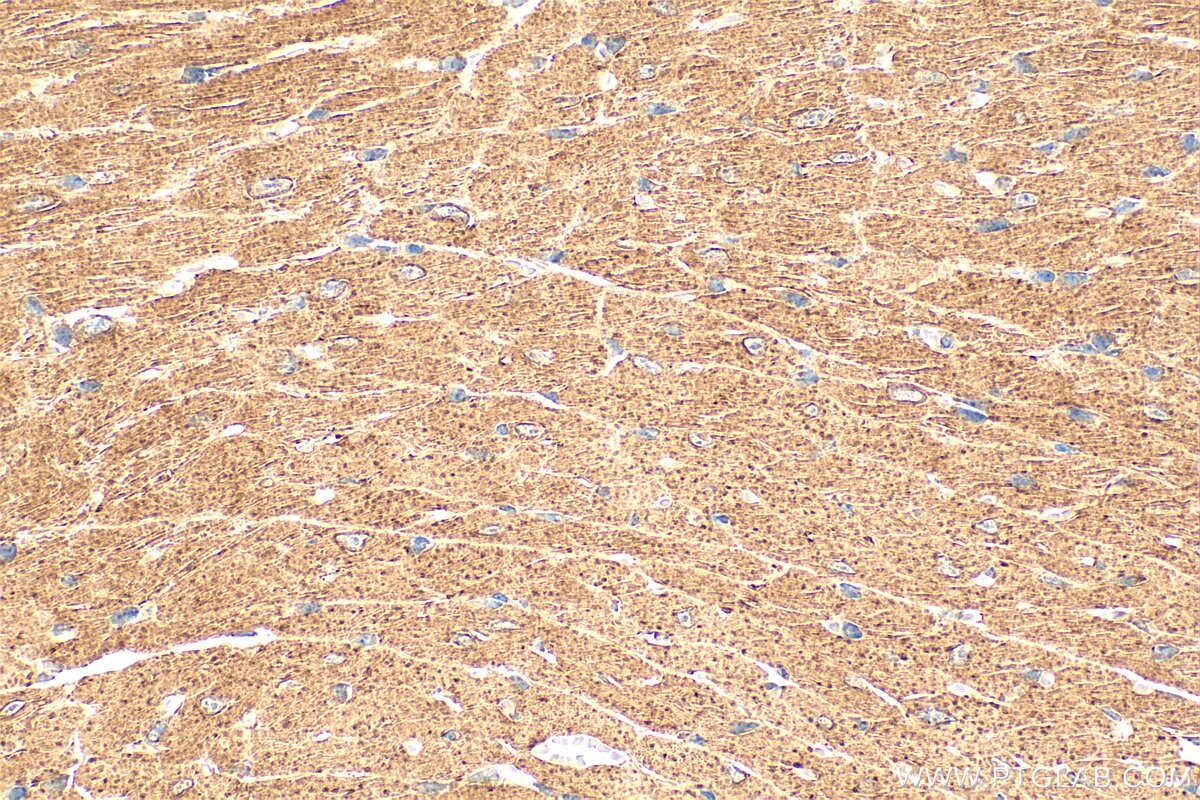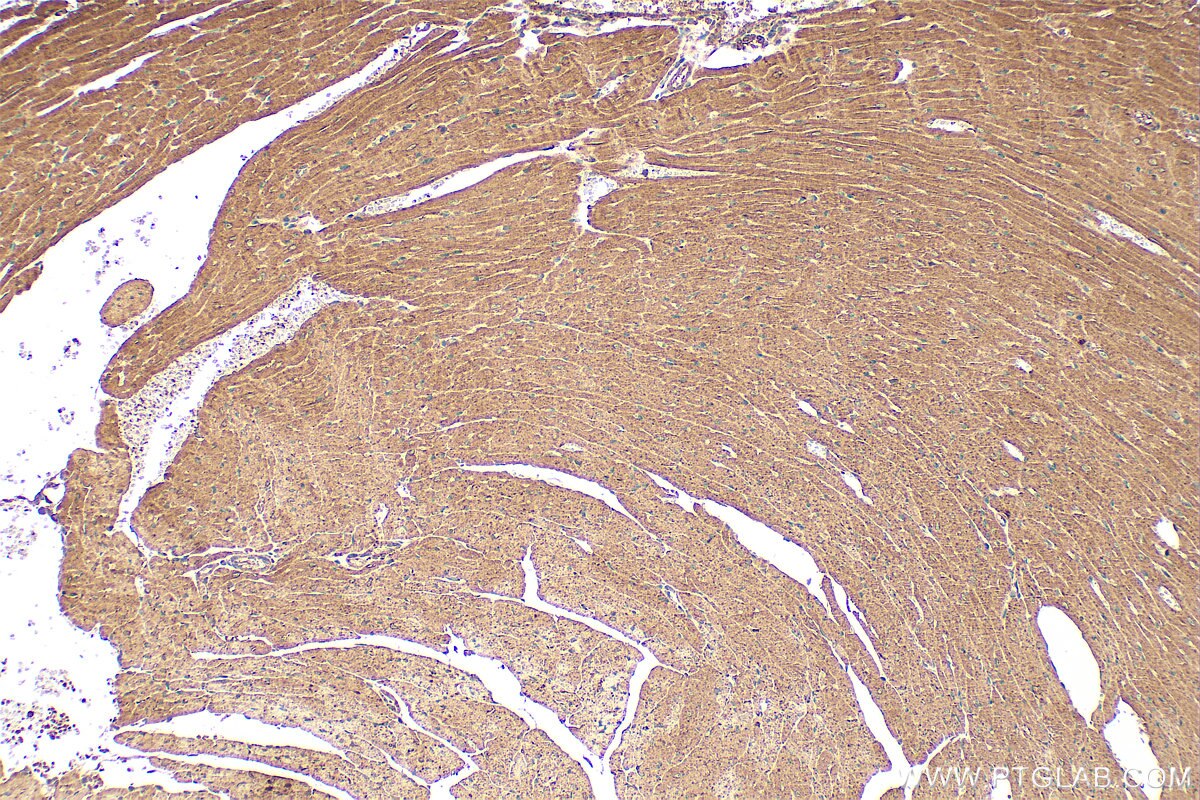Anticorps Polyclonal de lapin anti-FBXL8
FBXL8 Polyclonal Antibody for IHC, IP, ELISA
Hôte / Isotype
Lapin / IgG
Réactivité testée
Humain, souris
Applications
IHC, IP, ELISA
Conjugaison
Non conjugué
N° de cat : 16505-1-AP
Synonymes
Galerie de données de validation
Applications testées
| Résultats positifs en IP | cellules HCT 116, |
| Résultats positifs en IHC | tissu cardiaque de souris, il est suggéré de démasquer l'antigène avec un tampon de TE buffer pH 9.0; (*) À défaut, 'le démasquage de l'antigène peut être 'effectué avec un tampon citrate pH 6,0. |
Dilution recommandée
| Application | Dilution |
|---|---|
| Immunoprécipitation (IP) | IP : 0.5-4.0 ug for 1.0-3.0 mg of total protein lysate |
| Immunohistochimie (IHC) | IHC : 1:50-1:500 |
| It is recommended that this reagent should be titrated in each testing system to obtain optimal results. | |
| Sample-dependent, check data in validation data gallery | |
Informations sur le produit
16505-1-AP cible FBXL8 dans les applications de IHC, IP, ELISA et montre une réactivité avec des échantillons Humain, souris
| Réactivité | Humain, souris |
| Hôte / Isotype | Lapin / IgG |
| Clonalité | Polyclonal |
| Type | Anticorps |
| Immunogène | FBXL8 Protéine recombinante Ag9685 |
| Nom complet | F-box and leucine-rich repeat protein 8 |
| Masse moléculaire calculée | 374 aa, 41 kDa |
| Poids moléculaire observé | 41 kDa |
| Numéro d’acquisition GenBank | BC014414 |
| Symbole du gène | FBXL8 |
| Identification du gène (NCBI) | 55336 |
| Conjugaison | Non conjugué |
| Forme | Liquide |
| Méthode de purification | Purification par affinité contre l'antigène |
| Tampon de stockage | PBS with 0.02% sodium azide and 50% glycerol |
| Conditions de stockage | Stocker à -20°C. Stable pendant un an après l'expédition. L'aliquotage n'est pas nécessaire pour le stockage à -20oC Les 20ul contiennent 0,1% de BSA. |
Informations générales
FBXL8 is a conserved F-box protein that belongs to the ubiquitin ligase complex. It plays a significant role in various cellular processes, including tumorigenesis and metastasis. In colorectal cancer, FBXL8 promotes liver metastasis and stem-cell-like features by mediating ubiquitination and degradation of TP53. Additionally, FBXL8 has been shown to inhibit lymphoma growth and hematopoietic malignancies by targeting specific substrates for degradation. In the context of cardiac fibrosis, FBXL8 inhibits post-myocardial infarction cardiac fibrosis by regulating the ubiquitination of key proteins (PMID: 36855778, PMID: 33122824, PMID: 38615011).
Protocole
| Product Specific Protocols | |
|---|---|
| IHC protocol for FBXL8 antibody 16505-1-AP | Download protocol |
| IP protocol for FBXL8 antibody 16505-1-AP | Download protocol |
| Standard Protocols | |
|---|---|
| Click here to view our Standard Protocols |




